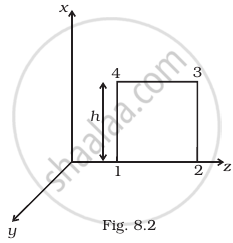Advertisements
Advertisements
प्रश्न
Write a short note on the radio waves.
उत्तर
It is produced by oscillators in electric circuits. The wavelength range is 1 x 10-1 m to 1 x 104 m and the frequency range is 3 x 109 Hz to 3 x 104 Hz. It obeys reflection and diffraction. It is used in radio and television communication systems and also in cellular phones to transmit voice communication in the ultrahigh-frequency band.
APPEARS IN
संबंधित प्रश्न
Which em waves lie near the high frequency end of visible part of em spectrum? Give its one use. In what way this component of light has harmful effects on humans?
Can an electromagnetic wave be polarised?
What are Fraunhofer lines? How are they useful in the identification of elements present in the Sun?
Write a short note on the microwave.
Maxwell's equation describe the fundamental law of
For which frequency of light, the eye is most sensitive?
An EM wave of intensity I falls on a surface kept in vacuum and exerts radiation pressure p on it. Which of the following are true?
- Radiation pressure is `I/c` if the wave is totally absorbed.
- Radiation pressure is `I/c` if the wave is totally reflected.
- Radiation pressure is `(2I)/c` if the wave is totally reflected.
- Radiation pressure is in the range `I/c < p < (2I)/c` for real surfaces.
An infinitely long thin wire carrying a uniform linear static charge density λ is placed along the z-axis (figure). The wire is set into motion along its length with a uniform velocity `v = vhatk_z`. Calculate the poynting vector `S = 1/mu_0 (E xx B)`.

A plane EM wave travelling in vacuum along z direction is given by `E = E_0 sin(kz - ωt)hati` and `B = B_0 sin(kz - ωt)hatj`
- Evaluate `oint E.dl` over the rectangular loop 1234 shown in figure.
- Evaluate `int B.ds` over the surface bounded by loop 1234.
- Use equation `oint E.dl = (-dphi_B)/(dt)` to prove `E_0/B_0` = c.
- By using similar process and the equation `ointB.dl = mu_0I + ε_0 (dphi_E)/(dt)`, prove that c = `1/sqrt(mu_0ε_0)`

Sunlight falls normally on a surface of area 36 cm2 and exerts an average force of 7.2 × 10-9 N within a time period of 20 minutes. Considering a case of complete absorption the energy flux of incident light is ______.
